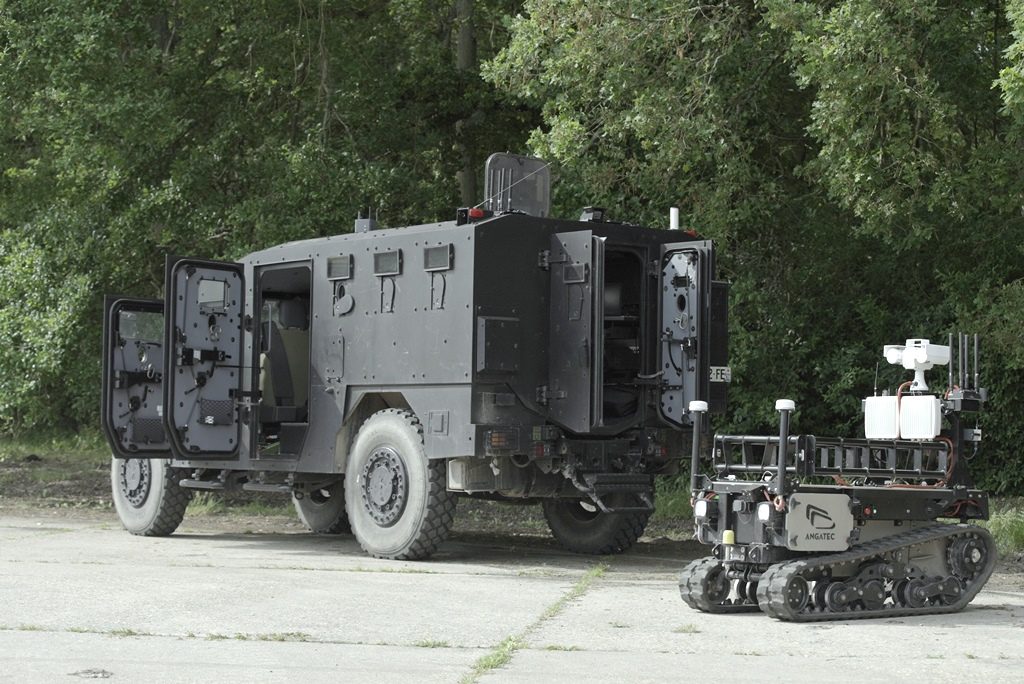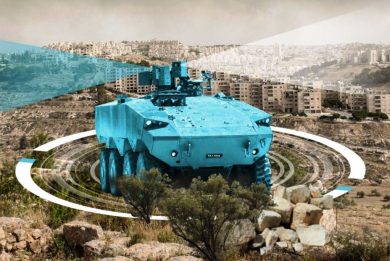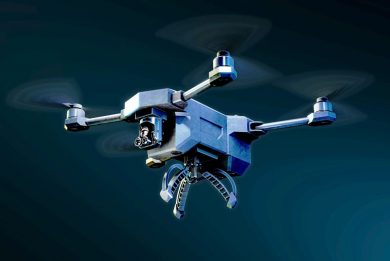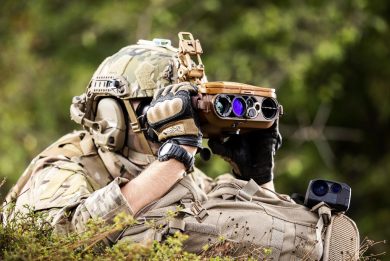
The Arquus roadmap to autonomy
The aim of robotisation in the military is keeping standoff distance between personnel and danger. Efforts being carried out by Arquus, the French military wheeled vehicles producer, part of the Volvo Group, goes in that same direction.
In its path towards robotisation Arquus obviously exploits what the Group has already done, the Swedish company having inaugurated its new Volvo Autonomous Solutions (VAS) business area on 1 January 2020, which now employs around 200 people. As an example of VAS activities, the latter has entered in collaboration with Holcim (Switzerland) SA, a manufacturer of construction materials, to jointly test and further develop the use of autonomous electric haulers in the limestone quarry of Gabenchopf, in Siggenthal. The VAS roadmap looks at projects with increased difficulty, moving to harbour handling with autonomous vehicles of different types travelling at slow speed, and then to an automated hub with vehicles travelling up to 60 km/h speed.
Starting from teleoperation, which has limited capabilities over the direct view range, Arquus intends adding autonomy bricks that might come either from VAS or from external partners, in order to allow vehicles to move in unstructured scenarios. Here too a form of assistance would initially allow increasing performances, while in the long-term target is a very high level autonomous driving capacity.
The Arquus entry into the autonomous world was through an R&D programme aiming at developing a convoy system where most vehicles would be unmanned. The Arquus idea is however different from the typical follow-me concept, where the manned vehicle leads the convoy, the other ones rolling along its tracks, but rather that of a collaborative convoy where each vehicle provides the other with some pieces of information allowing the convoy to move smoothly along the road. The main drawback of the follow-me concept when applied to a convoy is that errors are cumulated along the line of vehicles; the estimate is that each vehicle adds 50 cm error, which means that i.e. the seventh vehicle would travel with a 3.5 meters error. This might either limit the number of vehicles or put at risk the vehicles at the back, hence the collaborative logic that was patented by Arquus. Its supervision system was validated by simulation, showing the capacity to reproduce the correct trajectory. The company used as a starting point a system for a long distance logistic convoy developed by VAS. This concept extends to what Arquus defines as “predictive or collaborative mobility system”; should i.e. a Griffon 6×6 vehicle having problems in going forward in a certain place, the system would immediately send the information to all the other vehicles in the area, that will therefore avoid that specific place. Pushing the concept further, an autonomous vehicle might be sent ahead of a formation to analyse the terrain and establish its trafficability.
Arquus also took part in the Vulcain demonstration, organized by Vedecom with the participation of Nexter Robotics and CNIM Group, as part of the MC2 project, the acronym for Micro-convoi au contact, Micro-convoy in contact, the aim being to initiate a reflection on the realization of heterogeneous robotic convoys.
Together with Nexter, Safran, Academia and the Institut Saint-Louis, Arquus working on technology elements aimed at developing ADAS (Advanced Driver-Assistance System).
The company is also considering cooperation with small and medium enterprises as well as start-ups to acquire pragmatic solutions to increase effectiveness.
Arquus does not foresee the automation of combat vehicles, but considers that some platforms, mostly support ones, might be fitted with innovative technologies that might also bring to innovative mission profiles. One of these is the Mission Extender, a three-wheel platform that can be used as a trailer and, when decoupled from the mother vehicle, can move autonomously. Born to be fitted to Arquus Scarabee hybrid 4×4 armoured vehicle, the system usage concept was approved and now the system is at TRL 3-4, the company waiting some R&D funding from potential customers to go ahead with this project.
Arquus looks at autonomy bricks to be installed on its own vehicles, on Unmanned Ground Vehicles (UGVs), as well as on systems not related to mobility such as remotely controlled weapon stations.
Photo courtesy Arquus



